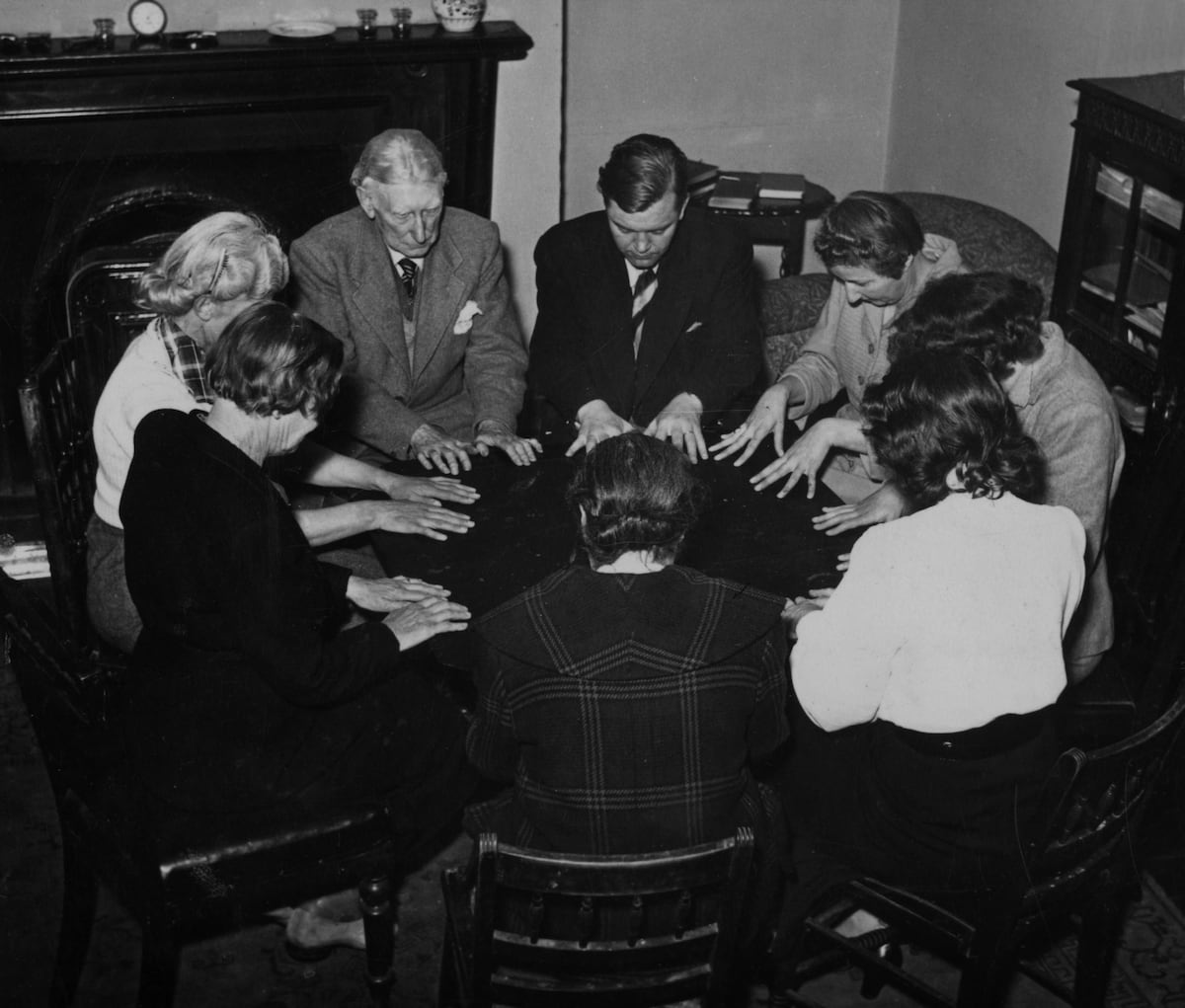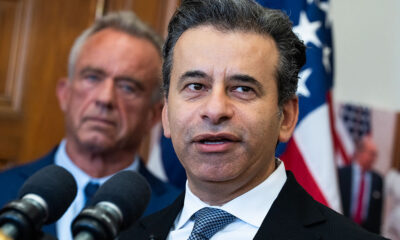World
Spiritualism Thrives as Families Seek Connection After War

The aftermath of World War I saw a surge in the practice of spiritualism, as grieving families sought to connect with their deceased loved ones. One poignant example is the case of Raymond Lodge, a young British soldier who died in September 1915 at the age of 26. Shortly after his death, messages purportedly from Raymond began to reach his family, transmitted through the spiritualist medium Mrs. Osborne Leonard.
These messages, including one stating, “TELL FATHER I HAVE MET SOME FRIENDS OF HIS,” drew attention not only for their content but also because Raymond’s father, Sir Oliver Lodge, was a distinguished physicist and a prominent member of the Society for Psychical Research. Initially skeptical, Sir Oliver became deeply engaged in séances with Mrs. Leonard, compiling their communications into the book “Raymond, or Life and Death,” published in 1916. The book resonated widely, running through numerous editions and reaching soldiers on the front lines.
Spiritualism had its roots in the mid-19th century, promoting the idea that it was possible to communicate with the dead. Although its popularity waned before the war, the unprecedented scale of loss during and after World War I reignited interest in the practice. Nearly 9 million soldiers perished, leaving countless families grappling with grief and uncertainty.
Connecting Through Grief
The cultural significance of spiritualism during this period is complex. The war had resulted in a collective experience of loss, where families found comfort in the notion of communicating with their deceased relatives. Raymond Lodge became a symbol of this phenomenon, offering hope to grieving families who yearned for signs of their loved ones’ well-being.
The desire to connect with the departed led to a proliferation of similar publications, with other families sharing their own experiences in books that mirrored Sir Oliver’s work. One notable example is “Claude’s Book,” published in 1919, which was transcribed from séances with Claude, another fallen soldier, by his mother, L. Kelway-Bamber. Kelway-Bamber, inspired by Sir Oliver’s account, sought out Mrs. Leonard to communicate with her son as well.
While modern perspectives may critique these séances as mere exploitation of grief, it is essential to consider the broader societal context. Spiritualism offered a means of coping with the overwhelming death toll of the war, allowing families to find solace in the belief that their loved ones were at peace.
Understanding the Human Experience
The emotional weight carried by families who lost young men during the war cannot be overstated. The impact of these losses was felt deeply in communities, where nearly every household had been touched by tragedy. The narratives that emerged from spiritualist practices provided a way for families to honour their loved ones, proving that each individual loss had significance, even amid mass casualties.
As Mary Lodge, Raymond’s mother, poignantly remarked in her husband’s book, “We can face Christmas now.” This statement encapsulates the emotional relief that spiritualism offered to many. While debates around the ethics of spiritualism and the authenticity of its practices continue, the historical context reveals a profound need for connection in times of profound grief.
In examining the rise of spiritualism in the wake of World War I, it becomes clear that these practices were not merely about the supernatural. They served as a crucial lens through which to understand human emotions surrounding death, loss, and the search for meaning in the face of tragedy. The legacy of this movement remains relevant, reminding us of the complexities of grief and the lengths to which people will go to preserve connections with those they have lost.
-

 Science2 weeks ago
Science2 weeks agoResearchers Challenge 200-Year-Old Physics Principle with Atomic Engines
-

 Politics2 weeks ago
Politics2 weeks agoNHP Foundation Secures Land for 158 Affordable Apartments in Denver
-

 World6 days ago
World6 days agoBoeing’s Aircraft Production: Assessing Numbers and Challenges
-

 Lifestyle5 days ago
Lifestyle5 days agoTrump’s Push to Censor National Parks Faces Growing Backlash
-

 Health2 weeks ago
Health2 weeks agoNeuroscientist Advocates for Flag Football Until Age 14
-

 Lifestyle2 weeks ago
Lifestyle2 weeks agoLongtime Friends Face Heartbreak After Loss and Isolation
-

 Science6 days ago
Science6 days agoAI Misidentifies Doritos Bag as Gun, Triggers Police Response
-

 Lifestyle6 days ago
Lifestyle6 days agoRed Bluff High School’s Elli Nolan Named Rotary Student of the Month
-

 Entertainment5 days ago
Entertainment5 days agoSyracuse Stage Delivers Lively Adaptation of ‘The 39 Steps’
-

 Health2 weeks ago
Health2 weeks agoFDA Launches Fast-Track Review for Nine Innovative Therapies
-

 Politics4 days ago
Politics4 days agoNFL Confirms Star-Studded Halftime Show for Super Bowl LVIII
-

 World2 weeks ago
World2 weeks agoGlobal Military Spending: Air Forces Ranked by Budget and Capability








